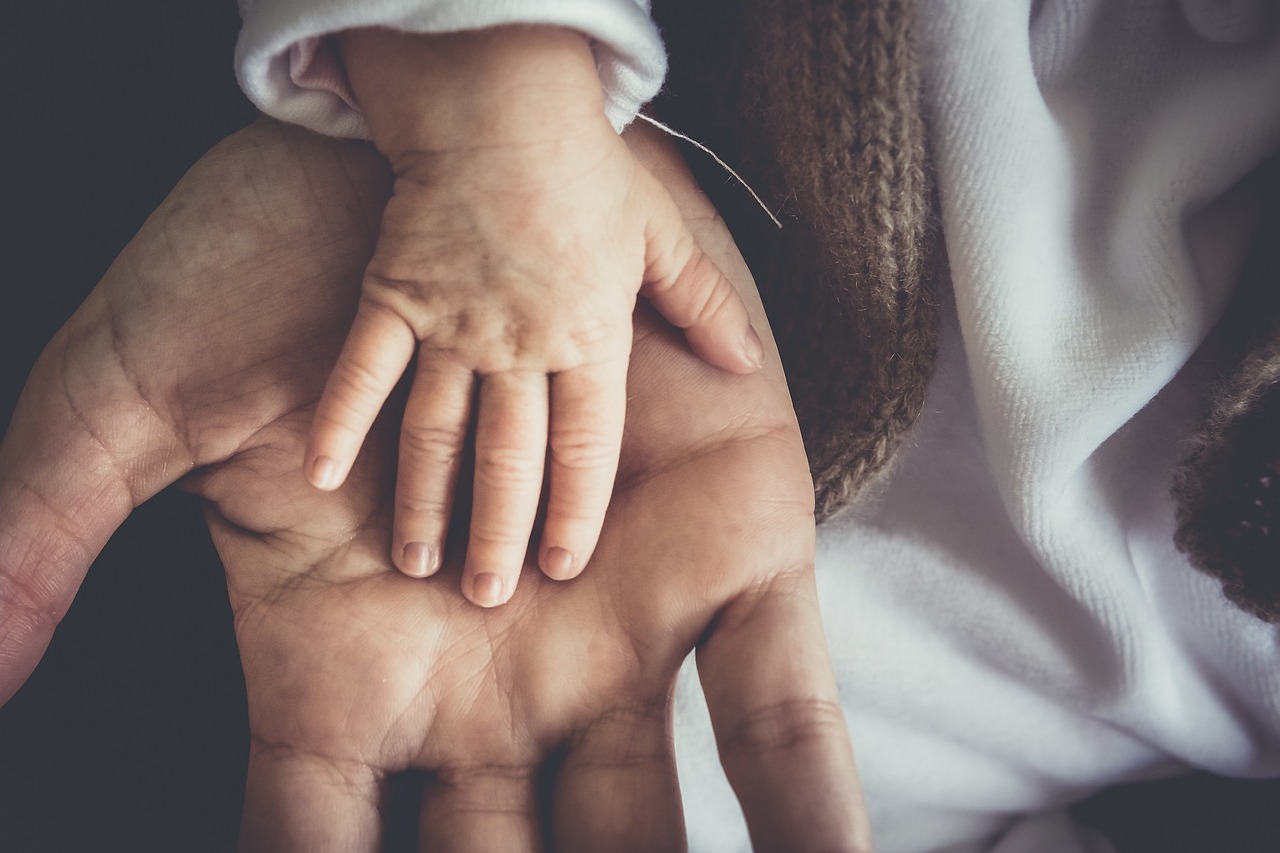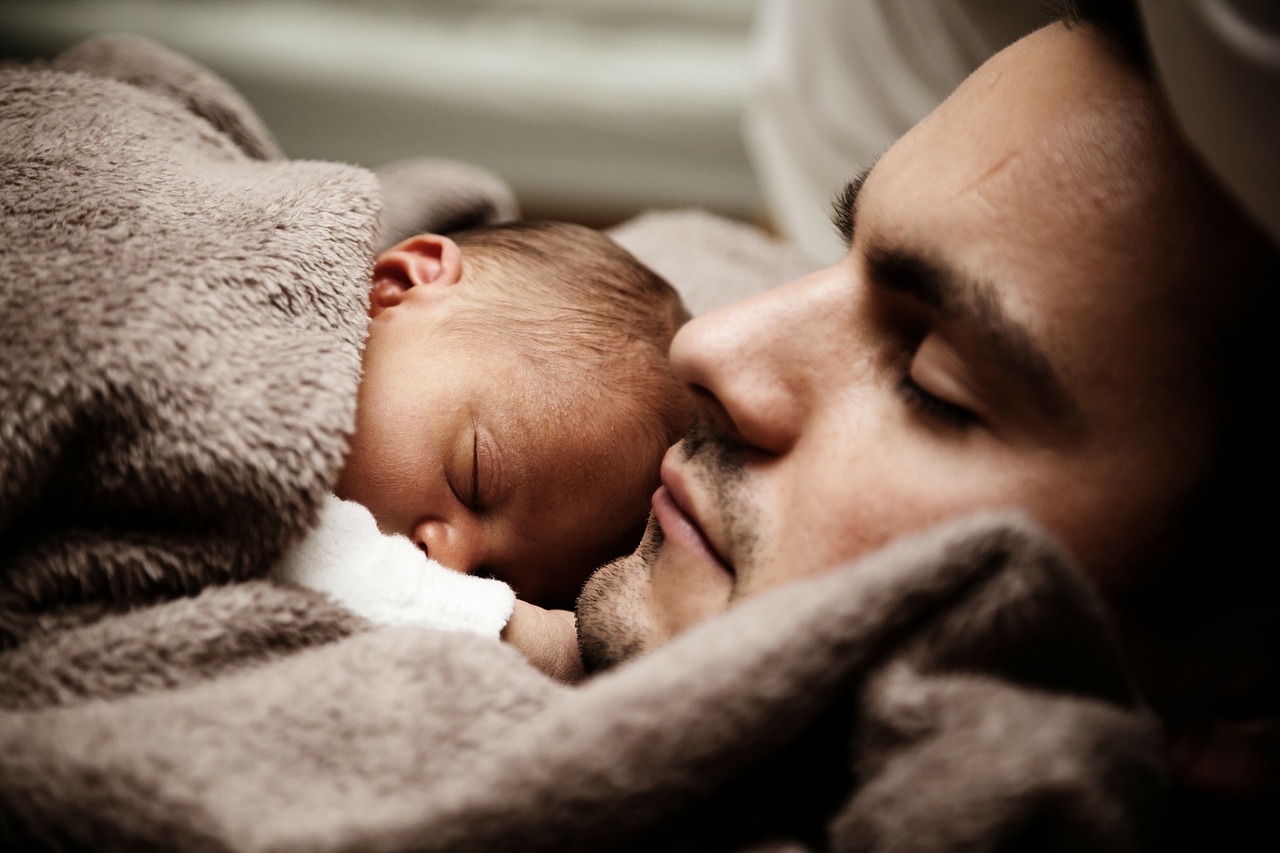Francine Barone
 Are fathers and “fatherhood” underrepresented as a subject of inquiry in anthropology? According to evolutionary anthropologist Anna Machin, up until 10 years ago, fatherhood was neglected by researchers “due to the misguided assumption that it was of no significance” (Machin 2019), creating a glaring gap in anthropological knowledge about a fundamental figure in our species: Dad. Popular stereotypes likely played a role in dismissing fathers as a meaningful subject for investigation:
Are fathers and “fatherhood” underrepresented as a subject of inquiry in anthropology? According to evolutionary anthropologist Anna Machin, up until 10 years ago, fatherhood was neglected by researchers “due to the misguided assumption that it was of no significance” (Machin 2019), creating a glaring gap in anthropological knowledge about a fundamental figure in our species: Dad. Popular stereotypes likely played a role in dismissing fathers as a meaningful subject for investigation:
the belief was that they contributed little to the lives of their children and even less to our society, and that any parenting behaviour a man might display was the result of learning rather than any innate fathering skill. […]There was little recognition that the majority of men, co-resident or not, were invested in their children’s lives. It was a given that fathers did not develop the profound bonds with their children that mothers did, because their role was confined to that of a secondary parent who existed, as a consequence of work, at a slight distance from the family. The lack of breadth in the literature and its sweeping generalisations and stereotypes was truly shocking.
While few would argue that men or masculinity are underrepresented in academic literature or the anthropological record, is it possible that fatherhood has been overlooked? Using global ethnographic examples found in eHRAF World Cultures, this article explores the concept of fatherhood – both biological and social, as well as parenting, father-child relationships, and what it means to be a dad around the world.
Defining Dads

What makes a father? Paternity is recognized in different ways across cultures. The man who is socially recognized as “father” (pater) by a child may not be the physiological or genetic father (genitor). Sometimes the two are indivisible; but in many instances, the making of a father is least of all biological. Most often, the two are tangled together with social and cultural responsibilities supporting, reinforcing, or effacing genetic ties.
According to Malinowski, for Trobriand Islanders in Melanesia, “‘fatherhood,’ as we know, is a purely social relation. Part of this relation consists in his duty towards his wife’s children; he is there ‘to receive them into his arms’ … he has to carry them about when on the march the mother is tired, and he has to assist in the nursing at home.” (Malinowski 1927: 23). With their hands-on parenting, Trobriand dads are hard-working and conscientious: “the father is always interested in the children, sometimes passionately so, and performs all his duties eagerly and fondly” (ibid.). As far as recognizing paternity:
in the native mind, the intimate relationship between husband and wife, and not any idea, however slight or remote, of physical fatherhood, is the reason for all that the father does for his children. It must be clearly understood that social and psychological fatherhood (the sum of all the ties, emotional, legal, economic) is the result of the man’s obligations towards his wife, and physiological fatherhood does not exist in the mind of the natives (Malinowski 1916: 410).
It is therefore entirely possible to have a loving relationship between father and children without reference to physiological paternity. The Trobriand example also dismisses the stereotypical category of a disinterested father who whose involvement with family and children is “less than” a mother’s, a topic that will be explored in more detail below.

Biology can easily be irrelevant in cases where it is taken for granted that pater and genitor are most likely one and the same; or, likewise, under the opposite circumstances where there is more than one potential male parent. This may be due to fictive kinship bonds, step-fathers, or in polygynous households. An example of the latter comes from Sherpa society where, by local custom, a wife may have up to two husbands and there is no limit on the number of wives a man may have at one time (Fürer-Haimendorf 1963: 165). One might expect that joint husbands would cause complications in the reckoning of paternity. However,
The relations between joint husbands and the children born to their common wife do not lead to emotional conflict. The question of biological fatherhood is not one of importance; both husbands treat all children as their own, and the children call both men father. Since as long as a polyandrous marriage lasts, both husbands, being brothers, hold their property jointly, all children are entitled to equal shares in the common property (Fürer-Haimendorf 1963: 166).
Conversely, among the Ojibwa, only biological parentage is consistently recognized and no sociological or fictive kinship relation can replace the title given to the birth father.
The terms employed for father are applied only to biological father and no other males. The same is true for son. There is no confusion in this matter on the part of the Round Lake Ojibwa, nor is there any concept of sociological father. Even in cases where one’s own father is dead and a male relative takes the place of the biological father and the individual treats him like father, he is always spoken of by the proper kin term or in occasional cases as “like a father”, but never by the term reserved for father (Rogers 1962: B15).
The private (and public) recognition of paternity within a society may be handled in unique cultural ways where “blood” ties have little to do with performing one’s role as a father. One such mechanism is via exchange. For the Nuer in Southern Sudan,
Since fatherhood is legitimated solely through the exchange of cattle, physical paternity—and hence a father’s contribution of substance to his child—is not the primary basis of father/child bonds as socially defined. Men in fact dissociate themselves from the processes of birth as well as from both mother and new-born child. […] the birth process is considered so polluting by men that a father will not touch his new-born child for a period of about a month (Hutchinson 1980: 382).
Similarly, in Gusii kinship (a Bantu people of western Kenya),
Although a father has the ultimate rights against any other person to supervise and control his sons’ or daughters’ activities, such rights only give a partial picture of the relationship between a father and his children that is created by bridewealth transfer. A man knows, as does the community, that according to the cultural definition of fatherhood, his biological children can never be his unless he pays bridewealth (Håkansson 1988: 141).
Exchange – including bridewealth or inheritance – is central in ethnographic accounts of paternity. Although it may seem cold and calculating to Western onlookers, it is not much different than the expectation that a father be made to support his wife (or partner) and offspring financially – something that the laws of modern nation-states often take more interest in than emotional support – and shows that there is a near-universal expectation for dads to be “providers”.
Father knows best: household power, authority and discipline

As the head of the household, fathers may be assumed to hold all the power to make and enforce the rules for the home and its residents. Is it an unfair, largely anglo-American assumption to characterize male authority in the household as a private island? Are all dads stereotypically distanced disciplinarians and all mothers loving, caring nurturers? Evidence from eHRAF World Cultures suggests a diverse approach to parenting and fathering around the world, although they share some commonalities.
Among the Hokkien Taiwanese:
The relations between mother and child are usually warm and intimate and remain so all throughout life, while the relations between father and child are more formal and distant. It is mothers who are expected to know and understand the children’s wishes and serve as a buffer between a boy and his father. For example, a working boy who is turning all his money over to his father might desire a watch but he is unlikely to ask his father for one. He can convey his desire to mother indirectly, mother will suggest it to father, and father will present a watch or money for a watch to his son as if it were his own idea (Barnett 1971: 426).
This example speaks to another common dynamic for better understanding fatherhood: the relationship between fathers and their children is anchored by the role of the mother. Their positions are not nearly as separate as the disciplinarian/nurturer dichotomy would have us believe. When considering a father’s authority, mothers are more often than not mediators between the symbolic head of the household, the family’s needs, and the children’s wishes and expectations.
For the indigenous Nahua of Mexico and El Salvador, the father strongly depends on the mother to maintain his position of respect. According to Lewis (1951: 330), it is “one of her more important obligations to teach the children to fear the father’s anger, to avoid offending him, and to demonstrate continually by her own behavior her respect for him”. Furthermore, children’s requests of the father are again mostly made through the mother. For example,
If a son wishes to continue school or a daughter wants to go to a dance, they will almost always first discuss the matter with the mother; and if she sees fit, she will ask the father. […] Many fathers also use the mother as the go-between in dealings with the children. If a father thinks his son is staying out too late or that his daughter is too free in her manner, he will often tell the mother to see that the children improve their behavior, rather than speak directly to them himself. In the same manner, if a child does not improve or if he commits an offense, it is sometimes the mother who receives the scolding or beating and not the child (Lewis 1951: 330).
And once again, for Kazakhs: “The power of the mother rests on the power of the father. Children obey her for fear that she will tell the father” (Grodekov and Krader 1889: 31).
Yet not all examples of fatherly authority or relationships with children focus on fear of punishment or indirect requests. When it comes to the subject of parental respect, “father is right” is a statement frequently heard among the Tikopia, as documented by Firth (1936). Nevertheless, his role in the home is not as autocratic as it appears at first glance:
In theory he is the head of the family; in practice he agrees to the wishes of the rest of the household to a very large degree. In domestic matters in Tikopia father, mother and children commonly act as an informal family council, constituting a unit much as in our own society. The father assumes the initiative and voices decisions, the mother assents, contradicts, qualifies, moulds her man’s opinions, the children listen greedily and comment sagely and often inopportunely on what is said. […] More deference is certainly paid to the head than to other members. “E tonu ko Pa!” “Father is right” is a statement very frequently heard, while dissent from his view is tactful and courteous. Nevertheless his opinions may be swayed to accord with those of his children (Firth 1936: 178).
This ethnographic snippet describes the opposite a distanced relationship between father and family. His role is essential as part of a collaborative family unit, even as he is outwardly recognized to be “in charge”. Dividing the roles of mother and father into “affectionate” and “disciplinarian”, respectively, is an oversimplification. Ethnographic accounts of shared responsibility, caring and affection between fathers and children shed light on this.

Dads and sons, particularly elder sons, can be very close, maintaining dependent relationships of mutual respect and deference throughout their lives. As one Tikopia son put it, ““If I speak to my father, my father listens to me; if my father speaks to me, I listen to him. We two, he and I, are one speech” –that is, they present a united front” (Firth 1936: 178). Similarly, Rogers (1962: B15) describes the lifelong bond between Ojibwa fathers and sons:
The relationship between a father and his son is a constantly evolving one and can be understood only in these terms. There is the period of childhood when a son is dependent upon his father, adolescence when the son associates much more with his father and is trained by him in economic pursuits and social conventions, and adulthood when the son is responsible for the welfare of his father.
Finally, the Hopi father-daughter relationship is a strong counterpoint to the trope of the distanced father. Inverting the stereotype, here mothers are largely responsible for discipline, and fathers for affection:
Her father’s attitude toward her should be one of tenderness and concern. He is not a disciplinarian; after early childhood, she is disciplined by her mother and, if necessary, her mother’s brother. The father, then, is an affectionate figure, who should always support and protect his young daughter (Schlegel 1973: 451).
With such a wide variety of parenting styles and understandings of fatherhood across cultures, the subject is certainly worthy of in-depth ethnographic exploration. The data from eHRAF World Cultures show that fathers are not merely “secondary” parents or financial providers distanced from their families by work obligations. Fathers are very much invested in their children’s lives and the maintenance of a happy and productive household. Like mothers, they develop strong bonds and relationships with their children. They can be loving, supportive, and affectionate. Even when their status as the respected head of the family is taken for granted, that is rarely, if ever, a role performed in total isolation. It requires the support and cooperation of the entire family unit who, in turn, develop and negotiate their roles together over time.

References
Barnett, William Kester. 1971. “Ethnographic Description Of Sanlei Ts’Un, Taiwan, With Emphasis On Women’S Roles: Overcoming Research Problems Caused By The Presence Of A Great Tradition.” Ann Arbor, Mich.: University Microfilms. https://ehrafworldcultures.yale.edu/document?id=ad05-004.
Firth, Raymond. 1936. “We, The Tikopia: A Sociological Study Of Kinship In Primitive Polynesia.” London, England: George Allen and Unwin, Ltd. https://ehrafworldcultures.yale.edu/document?id=ot11-002.
Fürer-Haimendorf, Christoph von. 1963. “Sherpas Of The Khumbu Region.” Mount Everest : Formation, Population And Exploration Of The Everest Region, By Toni Hagen Et Al. London: Oxford University Press. https://ehrafworldcultures.yale.edu/document?id=ak06-007.
Grodekov, Nikolaĭ Ivanovich, and Barbara Krader. 1889. “Kazakhs And Kirgiz Of The Syr-Darya Oblast.” Juridical Life. Tashkent: The Typolithography of S. I. Lakhtin. https://ehrafworldcultures.yale.edu/document?id=rq02-004.
Håkansson, Thomas. 1988. “Bridewealth, Women, And Land: Social Change Among The Gusii Of Kenya.” Uppsala Studies In Cultural Anthropology. Uppsala: [Uppsala University] ; Distributed by Almqvist & Wiksell International. https://ehrafworldcultures.yale.edu/document?id=fl08-026.
Hutchinson, Sharon Elaine. 1980. “Relations Between The Sexes Among The Nuer: 1930.” Africa 50 (4): 371–87. https://ehrafworldcultures.yale.edu/document?id=fj22-024.
Lewis, Oscar. 1951. “Life In A Mexican Village: Tepoztlán Restudied.” Urbana: University of Illinois Press. https://ehrafworldcultures.yale.edu/document?id=nu46-002.
Machin, Anna. 2019. “The devotion of the human dad separates us from other apes”. Aeon Essays. https://aeon.co/essays/the-devotion-of-the-human-dad-separates-us-from-other-apes Accessed 17 June 2019.
Malinowski, Bronislaw. 1916. “Baloma: The Spirits Of The Dead In The Trobriand Islands.” Journal Of The Royal Anthropological Institute Of Great Britian And Ireland 46: 353–430. https://ehrafworldcultures.yale.edu/document?id=ol06-006.
Malinowski, Bronislaw. 1927. “Sex And Repression In Savage Society.” London: Kegan Paul, Trench, Trubner and Co. Inc. https://ehrafworldcultures.yale.edu/document?id=ol06-011.
S., Rogers. Edward. 1962. “Round Lake Ojibwa.” Occasional Paper. [Toronto]: Published by the Ontario Dept. of Lands and Forests for the Royal Ontario Museum. https://ehrafworldcultures.yale.edu/document?id=ng06-061.
Schlegel, Alice. 1973. “Adolescent Socialization Of The Hopi Girl.” American Anthropologist 12 (4): 449–62. https://ehrafworldcultures.yale.edu/document?id=nt09-064.